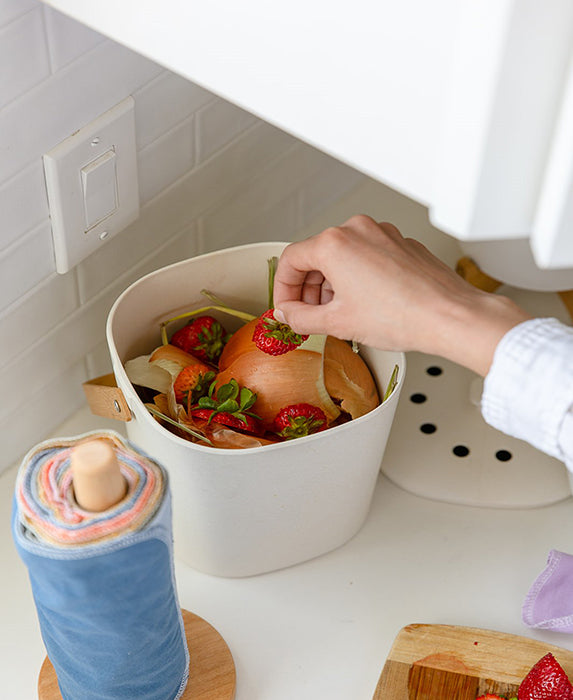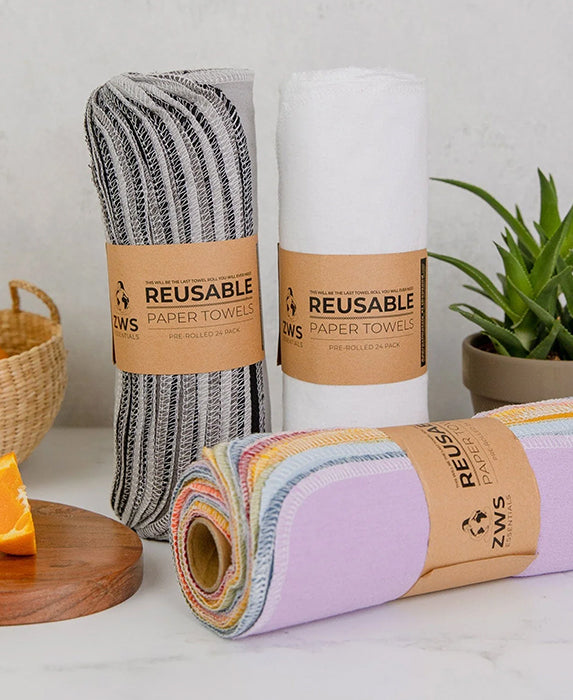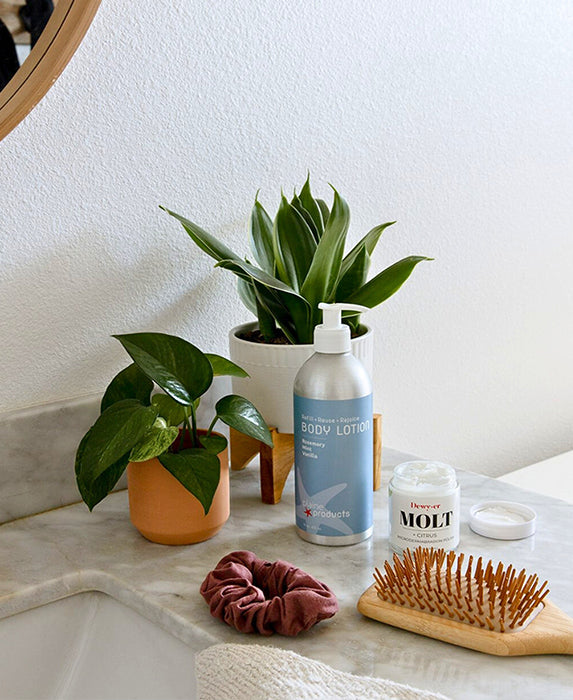It’s no secret that recycling can be a little confusing…to say the least. From following guidelines that differ not only from one town to the other, but that also depend on what waste hauler you’re using–recycling properly can take a little bit of research. That’s why, to fully kick off our “Journey to Recycling June”, the EarthHero team took a trip to Boulder, Colorado’s “Recycle Row”.
What’s Recycle Row, you say? The City of Boulder conveniently placed all of its recycling infrastructure in one place. To take the next step on our own recycling education, we toured two of these locations–the Boulder County Recycling Center (BCRC), and the Center for Hard to Recycle Materials (CHaRM).
We’d like to give a big thanks to Eco-Cycle for running the BCRC and CHaRM Facilities, and for leading the charge in working to transition Boulder to a Zero Waste city!
Needless to say, we got the dirt on all things recycling. While it’s easy to simply toss things in your blue bin and forget about it, there’s so much more that goes into turning our trash into brand new treasures. Here’s the EarthHero team with the breakdown:
Not-so-fun Facts with Juliet
I’ll be honest, until recently, I was what some would call a “wishful recycler”. If you’re anything like me, you’ve probably hoped that recycling is as simple as throwing anything and (almost) everything paper or plastic into the bin, and walking away guilt-free. News flash: recycling doesn’t work that way, and there’s a lot more to it than you might think.
From what to do with paper towels (they’re paper, right?) to the age old “to crush, or not to crush” aluminum can debate, I had so much to say that this quickly turned into its own post. Lucky for you, you can read my full report of the 7 Surprising Things You Can’t Recycle Curbside! We’ve tried our best to chose tips that are applicable to most recycling centers, but as always, we recommend you do a little research into your local recycling guidelines. Your local recycling center, and the planet, will thank you!
Hard-to-Recycle with Hannah
Visiting the BCRC and CHaRM, I already had a good idea about what goes into recycling the little things. I try to do my best to sort everything properly, and only recycle what actually can be recycled. What I was missing, however, was understanding the impact of some of the larger items–which just happen to be the ones that cause the biggest landfill issues! My biggest takeaway from this experience was actually what to do with all of the stuff that normal recycling centers can’t take.
Recycling the big stuff
Refrigerators
When you think of recycling, do you think of your refrigerator? Probably not, but check this out! I learned recently from our friends and Project Drawdown that properly disposing of refrigerants (think: anything that’s used to keep things cold) is the #1 way to cut down on greenhouse gases. In fact, HFC’s (the main cooling culprit) has the capacity to warm the atmosphere 1,000 to 9,000 times more than carbon dioxide.
Now, we’re lucky to have CHaRM (Center for Hard to Recycle Materials) nearby, where we can recycle these more difficult items, but I know it’s not that simple everywhere. That doesn’t mean that it’s impossible, though! Try one of these if you’re looking to responsibly get rid of a large appliance:
- Call up your local energy utility services to see if they offer an appliance recycling program!
- Ask your waste management service if they offer large appliance pick-up and recycling.
- Seek out a scrap metal recycler nearby! These facilities often have the ability to correctly recycle those cooling chemicals.
- Many retailers will pick up your old refrigerators when you buy a new one–just ask them to make sure it will be properly recycled.
Mattresses
The awesome part about mattresses is that they have so many reusable materials. When sent to the landfill, however, that wealth of materials can backfire–think about taking up a ton of space! In the US, we dispose of about 20 million mattresses annually. That takes up to 132,000 square miles in the landfill! On average, 85% of what makes up your traditional mattress is recyclable (from the foam to the fabric to the spring!) Next time you’re upgrading your mattress, think about where you’re sending your old one.
What you can do:
- Like appliances, retailers will typically pick up your old mattress when they bring you a new one! Just ask them to make sure it’s being properly recycled.
- Call your local waste management center and see if they have a mattress recycling program.
- Call your local thrift store and see if they offer mattress recycling.
Becki’s Breakdown
For me, this tour of the BCRC and ChaRM was special. Before EarthHero, I worked for Eco-Cycle, the incredible non-profit recycler that runs both the BCRC and CHaRM facilities that we toured. Throughout my time at Eco-Cycle, I worked within the community to educate others about our local recycling guidelines, and how our ability to process waste is largely dependent on the types of equipment that are available to us. The amount of times I had to explain to someone that their perfectly clean, #1 plastic container was not going to be recovered by our facility was, frankly, disheartening.
Technology to the rescue!
This time around, the tour symbolized how a community can mobilize and make big changes in the way we process waste. The BCRC had just undergone a huge upgrade, receiving two optical sorters to help more efficiently process materials. Funded in part by the Boulder County Recycling Tax, this upgrade was possible because our residents rose their hands and agreed that supporting recycling infrastructure is important to them. Now, the amount of aluminum we can recover rose by 90%, and many new shapes and types of plastics can be recovered and recycled properly. If that’s not inspiring, I don’t know what is!
Recycling: the end destination
In the world of recycling, there’s another topic looming over the conversation: China. As some of you may know, The US exports approximately ⅓ of its total recyclable material, with nearly half of that heading to China. However, China has recently banned dozens of types of foreign recyclables from entering the country, causing a huge commotion for American recycling centers. Rumor has it that our recyclables are too contaminated, so the processing is more expensive and results in a lower quality product. We’ve heard a lot of people wondering what that means for their recyclable materials–are they just being “thrown out”?
Luckily, we’ve learned that the BCRC has created many local partnerships that can take our recyclables directly, so the materials being collected in Boulder County aren’t being trashed. Phew! However, we know not all cities will be so lucky, so we wanted to provide some advice on what you can do if your town’s recyclables are piling up.
- This one’s obvious. Reduce, reduce reduce! When you’re grocery shopping, you can find a ton of products in reusable glass containers, or utilize reusable produce bags to cut down on unnecessary food packaging. We don’t want to sound like a broken record, but never underestimate the waste you can reduce by investing in reusable straws, coffee mugs, water bottles, utensils, and food containers.
- Find alternative places to recycle the tricky stuff. EarthHero has recently teamed up with TerraCycle, who’s doing incredible things in the world of recycling. Their motto, which is literally “Recycle Everything”, leads them to find recycling solutions for everything from electronics, to sports equipment, to toothpaste tubes. If you have a collection of empty face wash containers, toothpaste tubes, and other empty personal care items, you can send to to EarthHero and we’ll recycle it with TerraCycle! We also have a collection of their Zero Waste Box recycling solutions available here!
- Buy products made from recycled content (say it again for the people in the back!). Seriously, the final step in the recycling process is using collected materials to create something new. So, if you’re not buying anything made with recycled content, you’re not really participating in the full recycling process. We need to create a market for recycled materials, or this build up of unusable waste will just get worse, and that’s the last thing we need.
Ryan’s Reduce, Reuse, Recycle
In my efforts to stay educated on local sustainability issues, I’ve toured the local recycling center multiple times, and this time, my reaction was no different. Each time I’ve visited and viewed the continuous stream of human designed trash flying in all directions at dizzying speeds, I have mixed emotions. On one hand, it’s amazing to see so much material being diverted from the landfill and on its way to becoming new products. However, the dominant feeling is one of sadness. How did we get to this point of having so.much.stuff? How is it possible that this much material is being processed (and wasted) all over the world, every day? While recycling is certainly a massive and necessary band-aid for our consumption habits, it’s definitely not the only answer.
There are proven ways to make and consume products better, and it’s time for them to become the new normal. We’re in desperate need of a paradigm shift–we buy and consume too many things that are literally designed to end up in the landfill. Think about all the one-time use trash we generate. From food packaging, to coffee cups, to water bottles, straws, utensils, etc.
It’s moments like this that reassure me that we’re on the right path with EarthHero. If we can provide a reliable source for one-time-use replacements and products made from these recycled materials, while supporting companies that are creating products in better, more sustainable ways, we can be part of the shift towards a more sustainable future.









